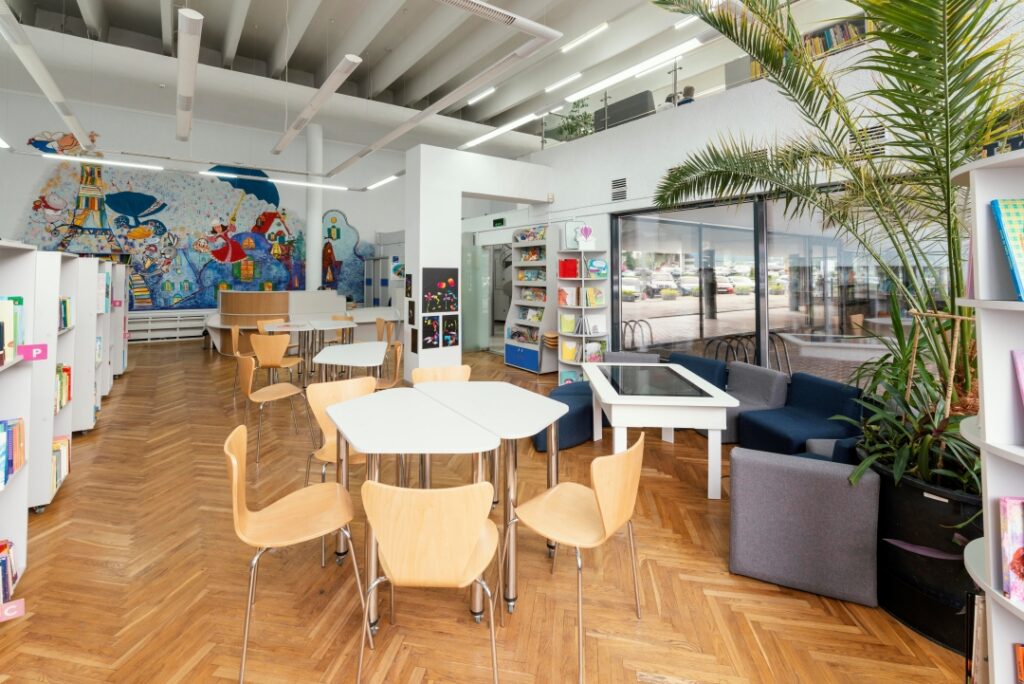In the realm of commercial real estate, space utilization has emerged as a pivotal strategy to not only maximize the efficiency of a property but also to significantly enhance tenant satisfaction.
By adopting innovative approaches to how to utilize office space and warehouse space utilization, property managers can create environments that cater to the dynamic needs of their tenants.
This article delves into the essence of space utilization and provides actionable insights on optimizing commercial property layouts for tenant satisfaction. So, let’s start!
Understanding Space Utilization: What It Is?
Space utilization involves the strategic planning and management of physical space within a commercial property to ensure its use, is maximized both efficiently and effectively.
This concept extends beyond mere spatial arrangement, touching on aspects such as office space utilization, building space utilization, and floor space utilization. At its core, it aims to harmonize the physical layout with the functional requirements of tenants, thereby fostering a productive and satisfying environment.
Principles of Effective Space Management
Effective space management is underpinned by several key principles, which include:
Optimization: Achieving the best utilization of office space means making every square inch count. From multi-use areas to clever storage solutions, optimization involves creative approaches to using space.
Maintenance and Flexibility: Regular upkeep and the ability to adapt spaces to meet evolving needs are critical for maintaining a functional and attractive environment.
Technology and Sustainability: Incorporating technological advancements and sustainable practices can significantly enhance the efficiency and appeal of a property.
Strategies for Optimizing Space in Commercial Properties
Here are eight comprehensive tactics that property managers can implement to ensure efficient space utilization and heightened tenant satisfaction:
Implement Flexible Workspaces: Embrace concepts such as hot-desking and shared workspaces to accommodate the fluctuating needs of tenants. This approach maximizes office space utilization by accommodating more employees in less space without sacrificing comfort or productivity. This is a win-win situation for the employers and employees.
Utilize Vertical Space: Especially relevant in warehouse space utilization, leveraging vertical space with taller shelving units can dramatically increase storage capacity. This strategy is essential for maximizing warehouse space utilization, allowing for better organization and accessibility of goods.
Adopt Modular Furniture and Layouts: Furniture that can be easily reconfigured offers the flexibility to adapt spaces for different uses, from individual workstations to collaborative spaces. This adaptability is key to the best utilization of office space.
Incorporate Technology for Space Management: Use IoT sensors and space management software to gather data on how spaces are being used. This information can inform decisions on layout changes, identify underutilized areas, and improve overall space utilization metrics.
Design for Multifunctional Spaces: Areas that serve multiple purposes—such as meeting rooms that can also be used as break rooms—enhance floor space utilization. This approach ensures that every square foot of space delivers value.
Optimize Common Areas: Transform common areas into multifunctional spaces that encourage collaboration, relaxation, and social interaction. This can improve employee satisfaction and productivity, which are key factors in office space utilization.
Implement Activity-Based Working Areas: Create zones designed for specific activities, such as brainstorming, focused work, or relaxation. This strategy supports how to utilize office space effectively by catering to the diverse needs of tenants.
Regularly Review and Adjust Layouts: Continuously monitor space utilization metrics and gather feedback from tenants to make informed adjustments to the layout. This iterative process ensures the building space utilization evolves with tenant needs, maximizing satisfaction and efficiency.
By integrating these strategies into their space management plans, commercial property managers can create environments that not only meet the current needs of their tenants but are also adaptable to future changes.
This proactive approach to space utilization fosters a dynamic, productive, and satisfying commercial space that can attract and retain tenants.
Metrics and Tools for Space Utilization
Employing space utilization metrics is crucial for understanding how space is being used and identifying areas for improvement. Tools like IoT sensors and space management software provide valuable data, enabling property managers to make informed decisions about space allocation and optimization.
Benefits of Optimized Space Utilization
Optimized space utilization offers a myriad of benefits. Some of these include:
Increased Cost Efficiency: Optimized space use can lead to significant cost savings by reducing the need for additional square footage. Efficient space utilization allows businesses to minimize their real estate footprint, leading to lower rental costs and operational expenses.
Enhanced Productivity: Well-organized spaces that cater to the needs of employees can boost productivity. An environment that facilitates easy access to tools, promotes comfort, and reduces clutter enables employees to focus better and work more efficiently.
Improved Employee Satisfaction and Retention: Spaces designed with employee needs in mind can significantly enhance job satisfaction, which in turn can lead to higher retention rates. Comfortable, versatile workspaces that support various workstyles and personal preferences make employees feel valued and satisfied.
Sustainability and Environmental Responsibility: Efficient use of space contributes to sustainability efforts by reducing the carbon footprint of a business. Implementing green practices in space management, such as energy-efficient lighting and recycling programs, demonstrates a commitment to environmental stewardship.
Flexibility to Adapt to Changing Business Needs: Optimized spaces are often designed with flexibility in mind, allowing businesses to quickly adapt to changing market conditions, work arrangements, or employee needs without significant disruptions or additional costs.
Better Collaboration and Innovation: Strategic space planning can facilitate collaboration among employees by providing spaces that encourage interaction, teamwork, and the exchange of ideas. This can lead to innovation and improved outcomes for the business.
Optimal Use of Technology: Integrating technology with space planning allows businesses to make informed decisions about how space is used. Real-time data collection and analysis can identify underutilized areas, optimize resource allocation, and enhance the overall functionality of the space.
Enhanced Brand Image and Client Perception: A well-designed, efficiently utilized space can positively impact how clients and visitors perceive a business. Modern, adaptable, and sustainable spaces can reflect positively on a company’s brand and values, attracting more clients and talent.
Challenges and Solutions in Space Management
Optimizing commercial property layouts is not without its challenges. Issues such as adapting to rapidly changing tenant needs, integrating new technologies, and balancing cost with functionality require thoughtful solutions. Continuous improvement, stakeholder engagement, and a willingness to adopt innovative practices are crucial to overcoming these challenges.
Conclusion: The Road to Optimized Space Utilization
Effective space utilization is a dynamic and ongoing process that plays a critical role in enhancing tenant satisfaction in commercial properties. By embracing the principles of space management, employing strategic optimization techniques, and leveraging the right tools and metrics, property managers can create environments that not only meet but exceed tenant expectations.
As the commercial real estate landscape continues to evolve, so will the strategies for optimizing space utilization, paving the way for more efficient, sustainable, and tenant-friendly properties.
Understanding and implementing these strategies can allow commercial property managers to unlock the full potential of their spaces, ensuring all these spaces are utilized to their maximum capacity for the benefit of all stakeholders involved.
You can also read: New Office Design Trends in 2024

